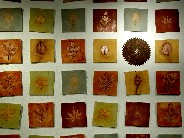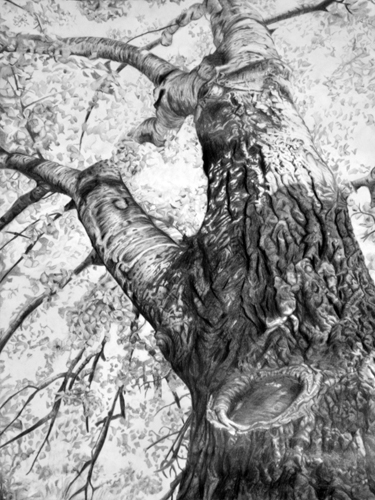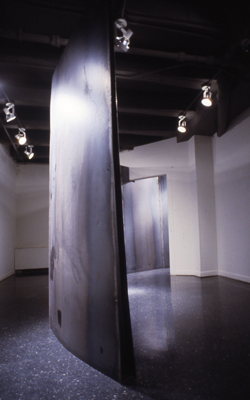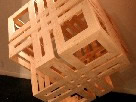| Composition: | An arrangement of all of the elements of art, according to the principles of orgnization, that acheives as unified whole. The elements and principles together define spatial relationships that are intended to evoke emotion and content through design. | ||
|---|---|---|---|
| Elements of Art: | The elements of art are the concrete things that you see in a composition. They are line, shape, negative space, value, texture, and color. | ||
| Line | The path of a moving point that is made by a tool, instrument, or material as it moves across an area. A line is usually made visible because it contrasts in value with its surrounding. | ||
| Implied Line | Implied lines are those that dim, fade, stop and/or disappear. The missing portion of the line is implied to continue and is visually completed by the observer as the line reappears. | ||
| Shape | An area that stands out from the space next to or around it because of a defined or implied boundary or because of difference of value, color, or texture. (Ultimately creates "space" as negative or positive.) | ||
| Negative Space | The unoccupied or empty space left after the positive elements (filled in shapes and lines) have been created by the artist. When these areas have boundaries, they also function as design shapes in the total structure of a work of art. | ||
| Value | The relative degree of light or dark. Also the characterisic of color determined by light or dark or the quantity of light reflected by a color. | ||
| Texture | The surface of a material that can be experienced through touch or the illusion of touch - can be physical, or visual. | ||
| Color | The visual response to the wavelengths of sunlight identified as red, green, blue, and so on; having the physical propoerties of hue, intensity, and value. | ||
| Principles of Organization: | The principles of organization govern the relationships of the elements used and organize the composition as a whole. They are harmony, dominance, variety, balance, proportion, scale, movement, and unity. | ||
| Harmony | The quality of relating the visual elements of a composition. Harmony is acheived by the repetition of characteristics that are the same or similar. These cohesive factors create pleasing interaction. | ||
| Dominance | The principle of visual organization in which certian elements assume more importance than others in the same composition or design. Some features are emphasized while others are subordinated. | ||
| Variety | Differences achieved by opposing, contrasting, changing, elaborating, or diversifying elements in a composition to add individualism and interest; variety is the opposite of harmony in visual art. | ||
| Balance | A sense of equilibrium achieved through implied weight, attention, or attraction, by manipulating the visual elements within an artwork to achieve unity. | ||
| Proportion | The comparative relationship between the parts of a whole or units as to overall size (size of thing to thing, not human to thing). | ||
| Scale | As related to human size. | ||
| Movement | Eye travel in a work of art as directed by visual pathways crated by the artist. | ||
| Unity | The result of bringing the elements of art into the appropriate ratio between harmony and variety to achieve a sense of oneness. Most importantly, unity defines the relationships of all elements as they function together to create a particular feeling that can aid in content. This word can nearly be interchanged with composition. | ||



.jpg)







